I was wondering how pandas formats the x-axis date exactly. I am using the same script on a bunch of data results, which all have the same pandas df format. However, pandas formats each df date differently. How could this be more consistently?
Each df has a DatetimeIndex like this, dtype='datetime64[ns]
>>> df.index
DatetimeIndex(['2014-10-02', '2014-10-03', '2014-10-04', '2014-10-05',
'2014-10-06', '2014-10-07', '2014-10-08', '2014-10-09',
'2014-10-10', '2014-10-11',
...
'2015-09-23', '2015-09-24', '2015-09-25', '2015-09-26',
'2015-09-27', '2015-09-28', '2015-09-29', '2015-09-30',
'2015-10-01', '2015-10-02'],
dtype='datetime64[ns]', name='Date', length=366, freq=None)
Eventually, I plot with df.plot() where the df has two columns.
But the axes of the plots have different styles, like this:
I would like all plots to have the x-axis style of the first plot. pandas should do this automatically, so I'd rather not prefer to begin with xticks formatting, since I have quite a lot of data to plot. Could anyone explain what to do? Thanks!
EDIT:
I'm reading two csv-files from 2015. The first has the model results of about 200 stations, the second has the gauge measurements of the same stations. Later, I read another two csv-files from 2016 with the same format.
import pandas as pd
df_model = pd.read_csv(path_model, sep=';', index_col=0, parse_dates=True)
df_gauge = pd.read_csv(path_gauge, sep=';', index_col=0, parse_dates=True)
df = pd.DataFrame(columns=['model', 'gauge'], index=df_model.index)
df['model'] = df_model['station_1'].copy()
df['gauge'] = df_gauge['station_1'].copy()
df.plot()
I do this for each year, so the x-axis should look the same, right?

